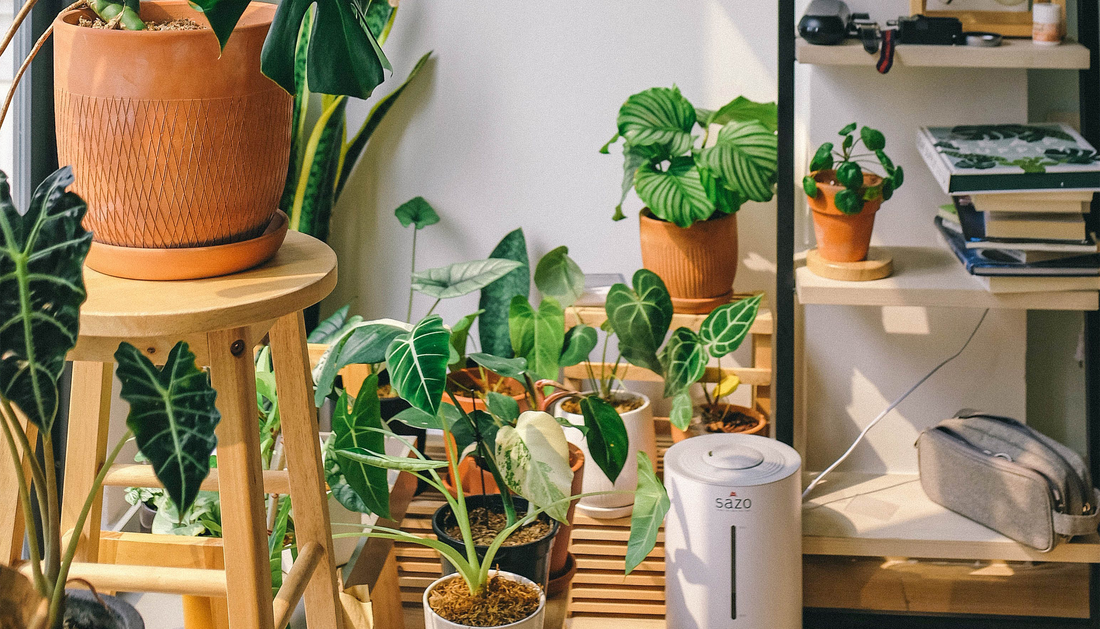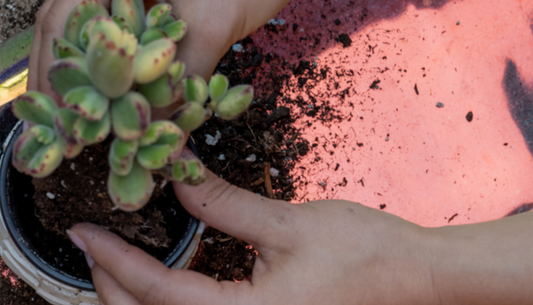As the cold weather sets in, our plants might feel the winter blues, just like us. The shorter days and drier air generally cause them to slow down their growth in order to conserve energy, but it doesn’t have to. It’s not that plants can’t grow in the winter, they just need a little extra TLC to give them the right flourishing conditions.
1. Maximize light:
It’s important to take advantage of the few daylight hours we have in the winter months. A good rule of thumb is to place your plants in south-facing windows so they can soak up as much natural light as possible. Plus, don’t forget to clean your windows and your plants’ leaves! Clean windows allow more light through and dust-free leaves will be able to maximize sunlight absorption.
Also consider rotating your pots to ensure all sides of your plant get equal light. This can help prevent leaning and uneven growth. If you live in an area with especially dark winters, consider supplementing with a grow light to keep your plants thriving despite the weather patterns.
Keep temperatures consistent:
Plants, like us, prefer a stable environment. Protect them from drafts and forced heat by placing them away from vents and windows or doors that let in cold air. Extreme temperature swings can cause stress to your plants and make them more susceptible to diseases. Just like humans, consistency for your plants can help them stay strong and healthy.
Add humidity:
Winter often brings dry air, which can be challenging for humidity-loving plants, especially tropical plants. The ideal solution is to run a humidifier that allows you to control the humidity of the room your plants reside in. If this isn’t possible, you can also put a tray of water with some pebbles near your plants. This method can also act as a humidifier, as the pebbles increase the surface area of the water, making it more effective than simply a tray of water. As you add humidity to your plants’ room, be mindful of not adding excess moisture to the soil, which can cause root rot.
Water intentionally:
Most winter watering guides give a blanket statement of watering less. While this can be true in many cases, it depends on your plant, air conditions, and supplemental light conditions. A simple trick to make sure you’re not over or under watering is to stick your thumb into the first couple inches of soil. If the soil feels dry, it’s time to water. If you feel moisture, you don’t need to water just yet.
Various factors can affect how you need to water your plants. For instance, if you’re supplementing with grow lights and keeping their environmental temperatures consistent, your plants may still think it’s summer and want more water. Sometimes the dryness of the air can also cause you to need to water more. Tend to your plants’ individual needs – they’re all unique and different!
So, as winter settles in, cultivating an oasis for your plants is possible with a little extra effort. Remember that our plants feel what we feel. Whether it’s dry air, lack of sunlight, or temperature swings, winter affects them, just like us. Keeping their environment as consistent as possible will help them flourish and avoid the winter blues.




